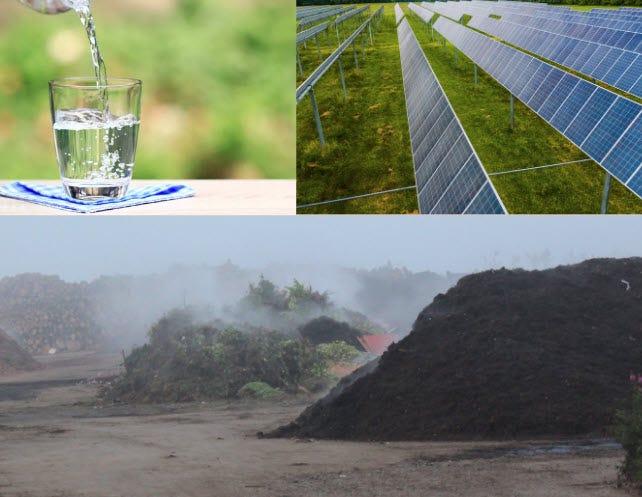5 regenerative investments that can reduce climate change and other environmental crises
How to get started with regenerative investing

By Eduardo Esparza, founder of the Blue Dot Project
Of all the regenerative funding opportunities available to impact investors, what are some what are some good places to start?
Why it matters
Investors who are new to funding regenerative projects may feel overwhelmed by the variety of options available. It can take a lot of research to find initiatives that fit an investor’s ideal portfolio.
This article lists five useful places to start your research.
It’s the fourth article in a series about regenerative impact investing.
You can find parts 1, 2, and 3 at these links.
Key categories of regenerative investment
A diversified portfolio of regenerative investments may contain these five elements:
Regenerative food production. Regenerative farming practices increase local production of abundant and affordable foods that are nutritious and safe to eat. They also improve soil health, increase biodiversity, and sequester carbon.
Local food systems and distribution networks. Investors can fund local food processing facilities and distribution networks that connect growers directly with local consumers and businesses.
Investors might also fund farmers' markets, food co-ops, and community-supported agriculture (CSA) programs.
Localization of food production and distribution reduces costs for growers and consumers.
Direct-to-consumer sales increase profits for farmers by eliminating middlemen. Local production also eliminates the carbon emissions of long supply chains.
It increases the resilience of food supplies and reduces food insecurity—all while supporting local economies.
Renewable energy initiatives. Investors can fund solar and small-scale geothermal projects (or other innovations in energy use). By providing clean, local energy, such projects can reduce greenhouse gas emissions and contribute to local energy independence. Investors can achieve stable returns by selling energy or energy-conservation measures.
Sustainable water management systems. All communities need water. Investors can provide innovative water management infrastructure and technologies, such as efficient irrigation systems, rainwater harvesting, and watershed restoration. Regenerative use of water in agriculture and other local industries can restore aquifers and water tables.
Eco-tourism and conservation. Eco-tourism ventures can promote conservation and educate visitors about a bioregion's ecosystems. Investors can fund eco-lodges, guided nature tours, and conservation projects that protect local wildlife and natural habitats. These assets can generate income while fostering environmental stewardship.
How to find investments in these 5 categories
Today you can invest directly in individual initiatives or indirectly through regenerative funds.
Regenerative funds enable you to diversify your portfolio and hedge your risk.
They also enable you to get started faster, because you can spread your investment across multiple vetted initiatives without having to do all the research on your own.
Today a small but fast-growing number of regenerative funds is available to invest in regenerative agriculture and food production, regenerative real estate development, and other areas of concentration.
Do you want ongoing news about regenerative investment opportunities?
If so, please share your email address for twice-monthly updates through the Blue Dot Brief. You can also hear the monthly Blue Dot Project Podcast through whatever podcast distributor you prefer.
Also check the website of The Club of Brussels.
They are a Blue Dot Project partner that supports creation of entrepreneurial regenerative businesses worldwide through their Extrapraneurs incubator program.



